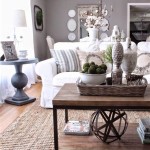How To Decorate Rustic Style Houses Exterior
Rustic style architecture and design evoke feelings of warmth, comfort, and a connection to nature. When applied to a house's exterior, it creates an inviting and welcoming atmosphere, blending seamlessly with the surrounding landscape. Achieving a successful rustic exterior involves carefully considering materials, color palettes, landscaping, and decorative elements. This article will explore key aspects of decorating rustic-style houses from the outside, offering guidance on creating a harmonious and visually appealing facade.
Choosing the Right Materials for a Rustic Exterior
The cornerstone of a rustic exterior lies in the selection of appropriate materials. Natural elements are paramount, creating an authentic and timeless aesthetic. The most commonly used materials include wood, stone, and metal, often left in their raw or minimally processed states to emphasize their inherent textures and characteristics.
Wood is a fundamental component of the rustic style. Different types of wood can be used to achieve varying effects. For exterior siding, options include cedar, pine, and reclaimed wood. Cedar is a durable and weather-resistant choice, offering a natural reddish-brown hue. Pine is another popular option, often treated to enhance its longevity and resistance to the elements. Reclaimed wood provides a unique and environmentally friendly option, bringing a sense of history and character to the exterior. Wood can be used for siding, trim, porches, and decorative details such as shutters or window boxes.
Stone is another essential element in creating a rustic exterior. Stone can be used for foundation walls, chimneys, accent walls, or landscaping features such as retaining walls or pathways. The type of stone used can vary depending on the region, with options including fieldstone, river rock, and flagstone. Natural variations in color and texture add to the rustic appeal, creating a visually interesting and dynamic surface. Stone is often dry-stacked, meaning it is assembled without mortar, to further enhance the natural look.
Metal, particularly wrought iron and copper, can add a touch of sophistication and durability to a rustic exterior. Wrought iron can be used for railings, gates, light fixtures, and decorative accents. Its intricate designs and dark finish contrast beautifully with the natural tones of wood and stone. Copper can be used for roofing accents, gutters, and decorative details, adding a warm and lustrous touch that develops a unique patina over time. The use of galvanized steel can also be incorporated for structural elements, which can be left exposed or painted for added character.
Consideration should be given to the textures of the materials used. Rough-hewn wood, textured stone, and hammered metal contribute to the tactile and visually rich quality of a rustic exterior. The interplay of these textures creates depth and dimension, enhancing the overall aesthetic appeal.
Selecting a Harmonious Color Palette
The color palette for a rustic exterior should complement the natural materials and the surrounding landscape. Earth tones are the most suitable choice, creating a sense of harmony and connection to nature. Neutral hues such as browns, greens, grays, and creams form the base of the palette, providing a backdrop for accent colors drawn from the natural world.
Browns are essential for emulating the natural tones of wood and earth. Different shades of brown, from light beige to dark chocolate, can be used to create depth and contrast. Lighter browns can be used for siding, while darker browns can be used for trim and accents, adding visual interest and defining architectural features.
Greens evoke the colors of foliage and vegetation, bringing a sense of vitality to the exterior. Soft greens, such as sage or olive, can be used for siding or shutters, blending seamlessly with the surrounding landscape. Darker greens, such as forest green or hunter green, can be used for accent colors, adding a touch of sophistication and depth.
Grays emulate the tones of stone and weathered wood, adding a sense of timelessness and durability. Light grays, such as silver or dove gray, can be used for siding or roofing, providing a neutral backdrop for other colors. Darker grays, such as charcoal or slate gray, can be used for accent colors or stone features, creating contrast and visual interest.
Creams and off-whites provide a soft and inviting contrast to the darker earth tones. These colors can be used for trim, porches, or decorative accents, brightening the exterior and creating a sense of warmth. The subtle variation in shades adds depth and visual interest, preventing the palette from appearing too stark or uniform.
Accent colors can be used sparingly to add pops of color and personality to the exterior. These colors should be drawn from the natural world, such as rusty reds, burnt oranges, or deep blues. These colors can be used for doors, shutters, or decorative elements, adding a touch of individual style while remaining consistent with the rustic aesthetic.
The surrounding landscape should also be considered when selecting the color palette. The colors of the trees, plants, and soil should be taken into account to create a harmonious and cohesive design. The goal is to create a seamless transition between the house and its environment, allowing the exterior to blend naturally with its surroundings.
Enhancing Curb Appeal with Landscaping and Decorative Elements
Landscaping and decorative elements play a crucial role in enhancing the curb appeal of a rustic-style house. By incorporating natural elements and carefully selected accents, the exterior can be transformed into an inviting and visually appealing space.
Native plants are an essential component of rustic landscaping. Native plants are adapted to the local climate and soil conditions, requiring less maintenance and water than non-native species. These plants also attract local wildlife, creating a vibrant and ecologically friendly environment. Options for native plants include wildflowers, ferns, grasses, and shrubs, chosen to complement the existing landscape and enhance the rustic aesthetic.
Stone pathways and patios create a natural and inviting entrance to the house. Stone pathways can be constructed from flagstone, river rock, or gravel, providing a durable and aesthetically pleasing surface. Patios can be constructed from similar materials, providing an outdoor living space that blends seamlessly with the surrounding landscape. The use of irregular shapes and natural variations in color and texture enhances the rustic appeal.
Wooden fences and gates provide privacy and security while complementing the rustic aesthetic. Wooden fences can be constructed from traditional materials such as cedar or pine, creating a natural and inviting boundary. Gates can be designed with intricate details or left in a simple and rustic style, adding character and visual interest. The use of natural stains and sealants helps to protect the wood from the elements while maintaining its natural appearance.
Exterior lighting can enhance the curb appeal of a rustic-style house while providing safety and security. Lantern-style light fixtures made from wrought iron or copper complement the rustic aesthetic, casting a warm and inviting glow. String lights can be used to create a festive atmosphere on porches or patios, adding a touch of charm and whimsy. The use of low-voltage lighting can also highlight landscaping features, creating a visually appealing nighttime display.
Decorative elements such as wooden benches, rocking chairs, and planters can add personality and charm to the exterior. Wooden benches and rocking chairs provide a comfortable and inviting place to relax and enjoy the outdoors. Planters filled with colorful flowers or herbs can add pops of color and fragrance to the exterior. The use of repurposed or vintage items further enhances the rustic aesthetic, adding a sense of history and character.
Water features, such as fountains or ponds, can add a sense of tranquility and serenity to the landscape. A stone fountain can be placed near the entrance of the house, creating a welcoming and visually appealing focal point. A small pond can be incorporated into the backyard, providing a habitat for wildlife and creating a peaceful retreat. The sound of running water adds to the overall ambiance, enhancing the sense of relaxation and connection to nature.
By carefully selecting landscaping and decorative elements, the exterior of a rustic-style house can be transformed into an inviting and visually appealing space that reflects the natural beauty of the surrounding environment. The key is to incorporate natural elements, choose complementary colors, and create a seamless transition between the house and its landscape.

16 Modern Rustic House Exterior Makeovers Brick Batten

16 Modern Rustic House Exterior Makeovers Brick Batten

The Ultimate Guide To Farmhouse Exterior Design Nikki S Plate

16 Modern Rustic House Exterior Makeovers Brick Batten

Rustic Cottage With Neutral Interiors Home Bunch Interior Design Ideas

Ideas To Design A Beautiful Farmhouse Exterior Start At Home Decor

Living With Style Rustic House Design And Home Decorating Ideas For Every Room

Mountain Style Homes Rustic Or Modern Discover Your
7 Rustic Siding Design Ideas Using Fiber Cement Allura Usa

78 Best Front Porch Decorating Ideas For A Dreamy Entry
Related Posts







